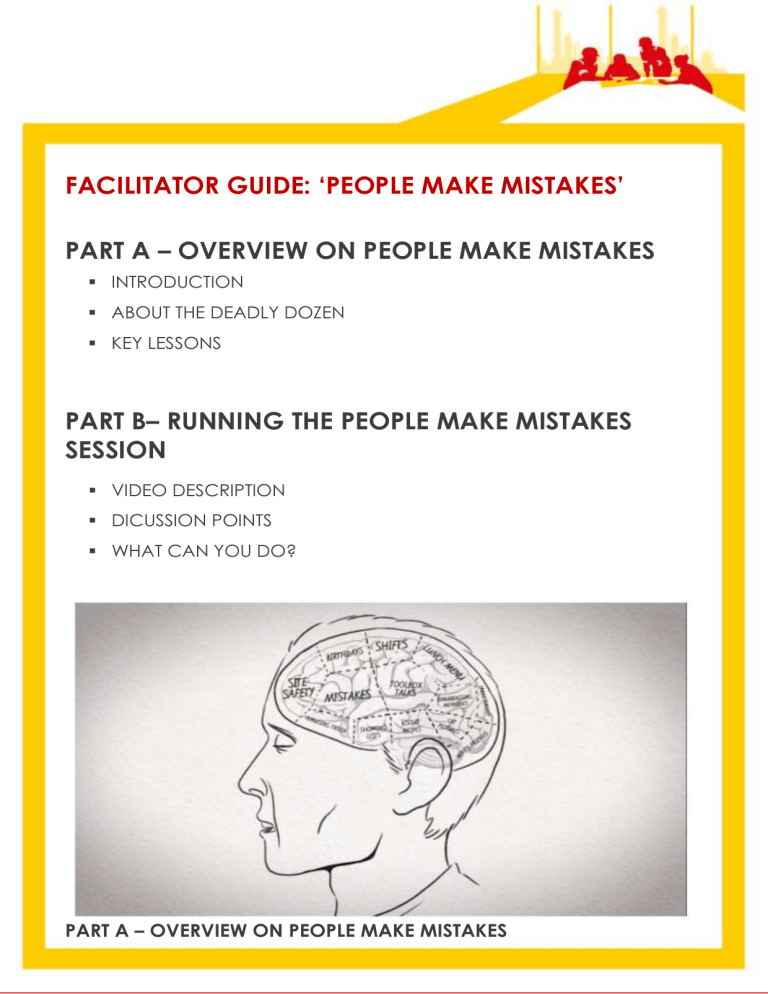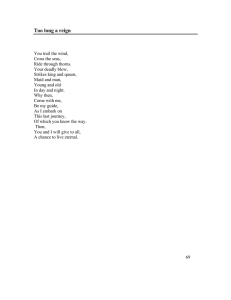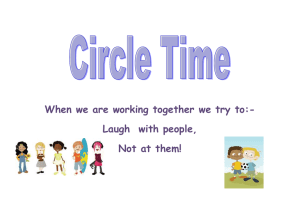
REFLECTIVE LEARNING FACILITATOR GUIDE FACILITATOR GUIDE: ‘PEOPLE MAKE MISTAKES’ PART A – OVERVIEW ON PEOPLE MAKE MISTAKES INTRODUCTION ABOUT THE DEADLY DOZEN KEY LESSONS PART B– RUNNING THE PEOPLE MAKE MISTAKES SESSION VIDEO DESCRIPTION DICUSSION POINTS WHAT CAN YOU DO? PART A – OVERVIEW ON PEOPLE MAKE MISTAKES REFLECTIVE LEARNING FACILITATOR GUIDE Introduction Key lessons The aim of this learning session is not to just watch a video, it is to think and talk about how our behaviours can impact safety in a group. We want the audience to reflect on the behaviours outlined in the video and identify how these behaviours can arise during their work activities and operations. During this session the group will have an opportunity to elaborate on how to prevent incidents occurring as a result of the discussed behaviours. Understand the importance of addressing human factors that can contribute to maritime incidents and errors The importance of individuals creating and maintaining strong behavioral barriers to promote a positive safety culture About the human factors ‘deadly dozen’ The deadly dozen refers to twelve common conditions that can act as precursors to human error, leading to incidents. These conditions can influence people to make unintentional mistakes. The conditions are: Situational Awareness – Are you aware of what’s happening around you? Working in isolation can lead to a partial view of the entire task at hand. It is important to keep up to date with the changing information and report any situation changes. Alerting – Do you speak up when you should? Capability – Is the crew really capable? Complacency – Is everything really ok? Expressing concerns is essential in maintaining situational awareness. Speaking up in a prompt manner can help avoid incidents and improve safety performance. Competence in maritime safety is more than holding the required certificates and training. Rather more about combining technical and non-technical skills successfully. It is therefore critical to seek guidance when unsure about a given task. Maintaining a level of chronic unease by being alert to what else could go wrong is key in reducing complacency. Always check and avoid working from memory. Fit for Duty - Are you really fit to work? Pressure – Do we have the resources we need? Communication – Do you really understand everyone? Teamwork – How well are we working together? Good physical, mental and emotional health are important to enable seafarers to carry out their roles and responsibilities safely. It is always critical to seek medical attention when injured or feeling unwell. Too much real or perceived pressure can lead to demotivation, leading to stress which can reduce performance and impact safety. It is therefore vital to be alert to workload pressures and seek help where necessary. Effective communication means that an intended message is delivered, received and understood by everyone involved successfully. This reduces assumptions that could lead to potential problems. Good teamwork leads to a good and effective vessel. It is important to be inclusive at all time and discuss potential problems with team members. Local Practices – Are we taking short cuts? To prevent risks arising from unsuitable work practices procedures are put in places and must be followed. Taking short cuts should be avoided as they can result in undesired outcomes. Distractions – Do we really need to interrupt our current task? It is essential to keep focused on the main task at hand and not allow minor issues to cause distractions. Fatigue – Are you well rested? Being fatigued can have a negative impact on performance and safety and is a significant factor in many maritime incidents. It is key to use rest periods appropriately. Culture – Is the way we do thing creating a good safety culture? Everyone always has a personal responsibility to think /act safely and encourage safe behaviors in their colleagues too. PART B– FACILITATING THE PEOPLE MAKE MISTAKES SESSION REFLECTIVE LEARNING FACILITATOR GUIDE Video description Quick Exercise on the deadly dozen Video Layout The video consists of five parts – it stops automatically after each part for an engagement activity. In the first part of the video the deadly dozen conditions are introduced with five everyday examples. Pause the video and take the group through the Quick Exercise on the deadly dozen. The video is then split into three scenarios: Scenario one is based on the bridge of a vessel where Situational Awareness, Teamwork, Communication, Alerting and Local Practices are highlighted. Scenario two is filmed on the deck of vessel where Fatigue, Fit for Duty, Distractions, Situational Awareness, Pressures, Capability, Communication and Complacency is shown. Scenario three is based in the Engine room of a vessel where Capability, Complacency and Culture can be identified. “The final part of the video summaries the deadly dozen conditions and askes participants how they will reduce the occurrence of one or more of the deadly dozens.” Content adapted from UK Maritime Coastguard Agency MGN 520 Before running the three scenarios ask the participants to discuss and give examples of the twelve human factors in the video. Use prompts from the previous page if participants are unsure of the human factors. Discussion Points Questions after part 1 of the video What behaviors contributed to the incident? Why did no one stop this from happening before it was too late? How can we stop this from happening to us? Question after part 2 of the video What factors led to this incident happening? Which of these behaviours do you recognise? How could this incident have been avoided? Questions after part 3 of the video What went wrong here? Why did it go wrong? What would you have done differently?



